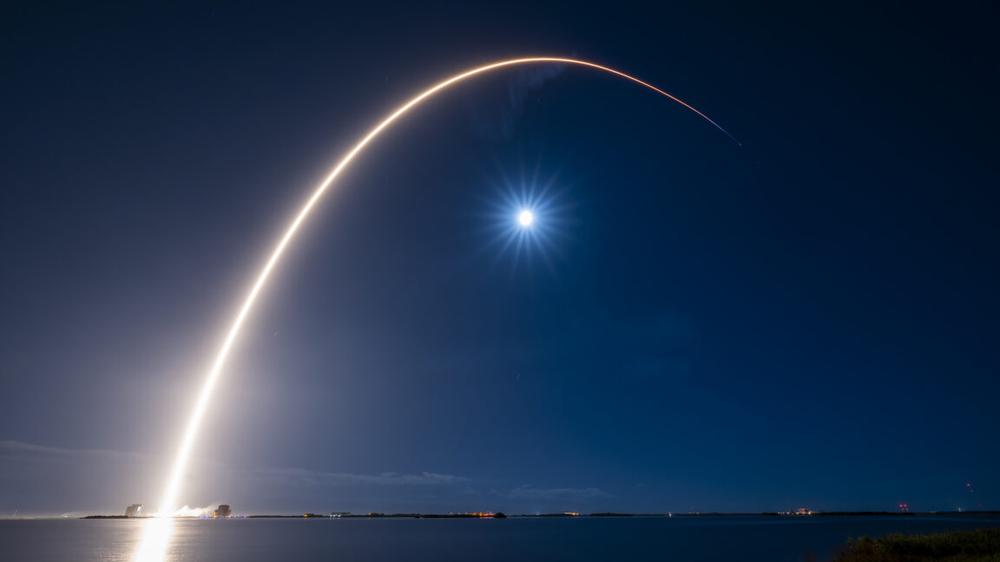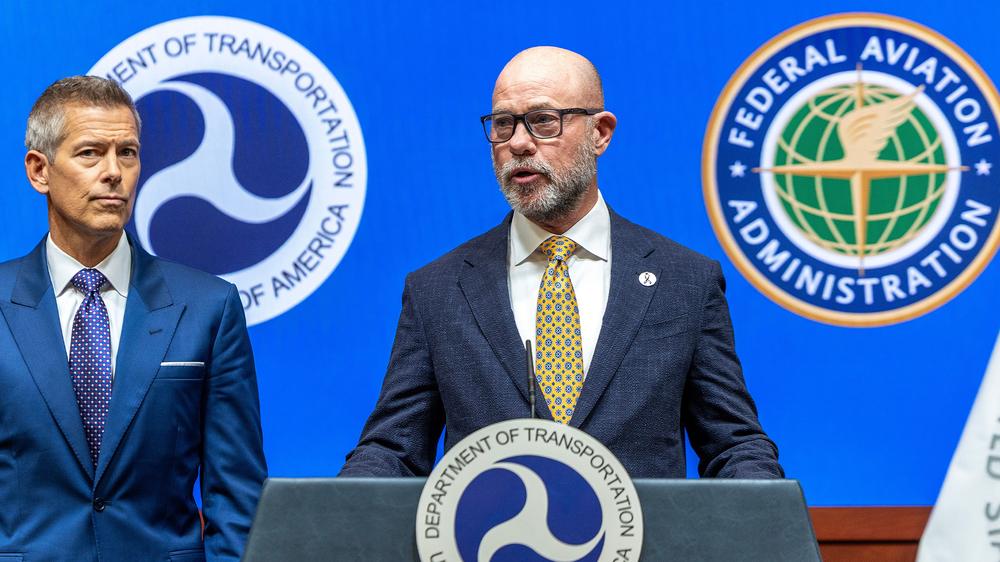The federal government shutdown, now in its 38th day, prompted the Federal Aviation Administration to issue a temporary emergency order Thursday prohibiting commercial rocket launches from occurring during “peak hours” of air traffic.
The FAA also directed commercial airlines to reduce domestic flights from 40 “high impact airports” across the country in a phased approach beginning Friday. The agency said the order from the FAA’s administrator, Bryan Bedford, is aimed at addressing “safety risks and delays presented by air traffic controller staffing constraints caused by the continued lapse in appropriations.”
The government considers air traffic controllers essential workers, so they remain on the job without pay until Congress passes a federal budget and President Donald Trump signs it into law. The shutdown’s effects, which affected federal workers most severely at first, are now rippling across the broader economy.
Sharing the airspace
Vehicles traveling to and from space share the skies with aircraft, requiring close coordination with air traffic controllers to clear airspace for rocket launches and reentries. The FAA said its order restricting commercial air traffic, launches, and reentries is intended to “ensure the safety of aircraft and the efficiency of the [National Airspace System].”
In a statement explaining the order, the FAA said the air traffic control system is “stressed” due to the shutdown.
“With continued delays and unpredictable staffing shortages, which are driving fatigue, risk is further increasing, and the FAA is concerned with the system’s ability to maintain the current volume of operations,” the regulator said. “Accordingly, the FAA has determined additional mitigation is necessary.”
Beginning Monday, the FAA said commercial space launches will only be permitted between 10 pm and 6 am local time, when the national airspace is most calm. The order restricts commercial reentries to the same overnight timeframe. The FAA licenses all commercial launches and reentries.
Launch times are driven by various factors, most prominently the mission’s destination. Launches going to specific orbits, like that of the International Space Station, have narrow windows to get off the ground each day. The ISS, for example, flies in an orbital path that remains fixed relative to the Earth. The planet’s rotation brings a spaceport under the station’s orbital plane at specific times each day, and this determines when a rocket heading for the ISS is able to take off.
SpaceX is, by far, the most active US launch company, and most of SpaceX’s Falcon 9 rocket launches deploy its own Starlink Internet satellites. SpaceX has some flexibility in scheduling Starlink launches because the network, comprising nearly 9,000 active satellites, flies in dozens of orbital planes at different altitudes and inclinations. In the short term, SpaceX could choose to target orbital planes that are reachable at night.
Other missions have immovable launch windows. The next launch of Blue Origin’s New Glenn rocket, scheduled for 2:45 pm EST (19:45 UTC) Sunday, will deploy two NASA satellites heading for Mars. The particulars of that mission’s trajectory necessitate an afternoon launch from Cape Canaveral Space Force Station, Florida.
NASA signed a commercial contract with Blue Origin for this weekend’s launch, making it a commercial mission licensed by the FAA. The space agency saved money by taking this approach instead of going with a more traditional contract with government oversight.
It’s unclear whether NASA could ask for a waiver if the New Glenn launch delays into next week. The situation with the New Glenn launch puts Transportation Secretary Sean Duffy, who also serves as NASA’s acting administrator, in the unique position of potentially requesting and granting such a waiver.
Another commercial SpaceX launch, currently scheduled for Tuesday, will deliver numerous small satellites into a specific type of Sun-synchronous orbit. For SpaceX’s Falcon 9 rocket to reach this orbit, it must lift off from Vandenberg Space Force Station, California, in the late morning, local time.
United Launch Alliance was supposed to launch a large commercial communications satellite for Viasat this week, but a hardware problem stood in the way of liftoff. The launch time, driven by technical requirements, was scheduled for shortly after 10 pm local time in Florida. But the launch time gets a few minutes earlier with each day of delay, meaning it will now likely fall within the FAA’s curfew by the time ULA is ready to fly.
There are a handful of upcoming missions that presumably won’t be affected by the FAA’s order. These include the launch of a US-European oceanography satellite later this month on a Falcon 9 rocket. NASA is responsible for authorizing the launch, meaning it doesn’t require an FAA license. The same situation exists for launches for the US Space Force.
Rocket Lab, a US-based company under the authority of the FAA, said launches from its primary spaceport in New Zealand are “unaffected” by the restrictions because they do not operate in US airspace.
But the broader impacts of the shutdown are taking their toll on NASA. Ground crews at Kennedy Space Center in Florida have continued working to prepare for the launch of the Artemis II mission early next year, but civil servants and contractors are working without pay. Officials anticipate the shutdown will eventually impact the schedule for Artemis II, which will send astronauts to the vicinity of the Moon for the first time in more than 50 years.
Lawmakers in Washington, DC, are negotiating a possible end to the shutdown, but there’s no indication of when a compromise will be reached. Democrats in Congress want to extend expiring tax credits to lower health insurance premiums. The minority party is also protesting cuts to Medicaid.
The ongoing impasse broke the record this week for the longest government shutdown in US history.

 Understaffed FAA Recommends Pilots Just Go With Their Gut
Understaffed FAA Recommends Pilots Just Go With Their Gut